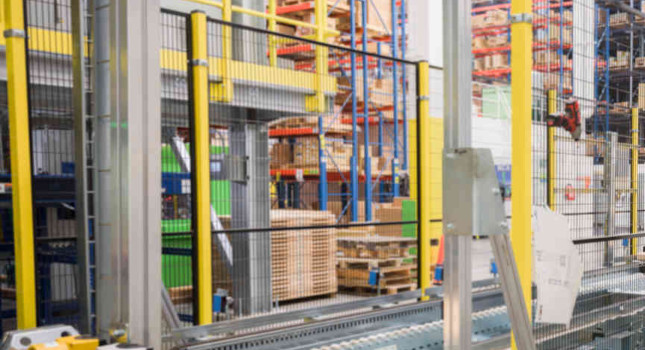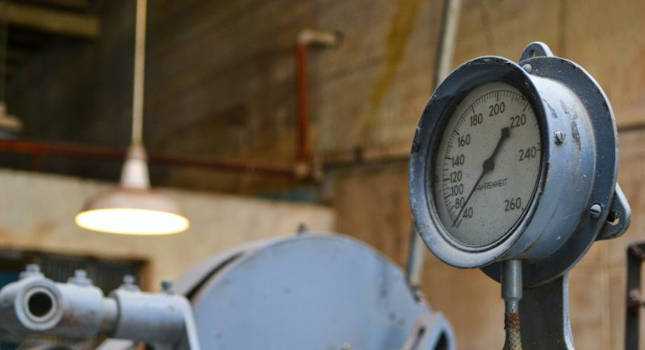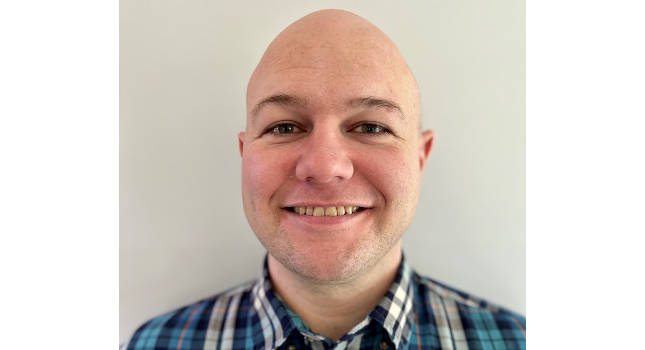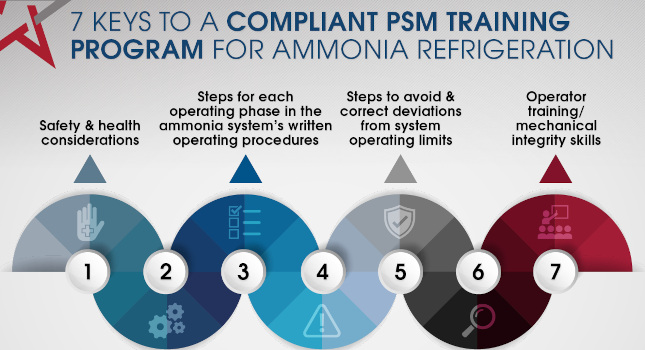Integrated solutions and managed services address challenges facing global water industry.

Water has always been precious. And for some time now it’s been apparent that water is a finite global resource. Visit any water-related industry trade show and it’s clear that technology solutions are a big part of society’s response to global water challenges.
Plant Engineering recently sat down with Kevin Milici and Greg Becker, both of whom are executive vice presidents of technology with Kurita America, a company that exemplifies the global nature of today’s water technology markets.
An edited version of the interview follows.
Looking at the global water market, what portion of it is most of interest to Kurita?
Kevin Milici: Our fundamental philosophy as a company is to study the properties of water, master them, and create an environment in which man and nature are in harmony. We translate that philosophy into our everyday practices, our offerings, and our behaviors. It’s vital we do so, not just for today, but for tomorrow. When you look at, for example, the projections for the year 2050 as to what percentage of the world will be in water-stress; it’s a scary proposition.
It is inspiring to participate in a business focused on sustainability, the health of society, and the health of the planet as a whole.
What was the strategy behind Kurita’s acquisition of U.S. Water and Fremont Industries?
KM: Kurita is a significant global player, but up until about six years ago, its focus outside of Asia was limited. The company decided to change that and made serious investments to expand its footprint geographically, including in Western Europe and the Americas. In North America, Kurita was fortunate to have the opportunity to acquire Minneapolis-based Fremont Industries. A couple of years later, that was followed by the acquisition of U.S. Water Services, also Minneapolis-based. This created the critical mass that’s able to penetrate the North American market.
Where do you see innovation when it comes to industrial water treatment, in terms of new processes or new solutions or in the distribution model? Are you seeing real increases in managed services that you need to provide to your customer?
KM: It’s recognized in the U.S. that we have a skills gap, with the demographics of the workforce shifting. The percentage of the workforce that’s within 10 years of retirement is significant. So, as that group of experienced people retires there are real challenges finding ways to fill the gap left behind. Our customers are often finding it’s not easy.
Technology can play a role in that, in the form of the Internet of Things (IoT), and advances in sensory technology and control devices used at the edge, or in other words, at the point of application. Wireless communications make it easy for customers to get data into the cloud, without unnecessary security concerns. Another important ongoing development is cloud computing, as well as being able to apply analytics to that data and then share it with the users who need it, in the form they need it, and when they need it.
Personnel that previously may have taken a long time to develop their knowledge and skills to operate a water system can now become competent and capable faster because the technology is there to support him or her.
Greg Becker: There are a lot of exciting things being worked on right now in our industry. This includes innovations on the chemistry side and other technologies as well. For example, our customers require more precise measurement of many relevant parameters and quick reaction time. Digital solutions are more important. Our task is packaging those solutions for our customers. Customers want an integrated system solution and the simplicity associated with that.
However, the challenges addressed to get there can be complex. That’s something that we feel Kurita excels at providing. It requires not just expertise in biology and chemistry, but also in plumbing and the engineering disciplines to make the whole system work effectively and economically for a customer.
Is it safe to assume that with the combination of companies brought together, it’s going to facilitate a process of offering wider-ranging solutions to your customer base?
KM: One of the legacy companies of the new Kurita America was U.S. Water Services. U.S. Water was formed around the 20 years ago around the notion of integrated solutions.
However, those words mean different things to different people. They’re bandied about in the marketplace kind of loosely. when we say integrated solutions that means we look at a customer’s challenges as the first of a four-step process, to dive deeply into their current landscape and also give thought to what the future might look like 5 or 10 years down the road. We need to design solutions that not only address today’s need but the anticipated challenges of the future as well.
Our offerings include both equipment-based systems and chemistries, and the services and engineering that go along with that. What does that mean from a practical point of view? When we look at a problem, it doesn’t matter to us whether it’s a chemical or an equipment solution. We try and find the best solution, one that meets customer needs and desires today, and as I mentioned, includes a vision for the future as well. We’re not concerned about pushing a particular technology. In most cases, a blend of technologies and services result in the best solution with the lowest total cost of operation.
When we say integrated solutions, that’s the DNA of the North American organization. Kurita has a similar philosophy and approach. It too is an equipment, chemical, engineering and services company, on a large scale. About two-thirds of Kurita’s revenue comes from equipment and related services businesses. The other third is chemicals. The breadth and depth of technologies that we can bring together has gone up many-fold now as part of Kurita.
The first time we visited Kurita after being acquired, a team of our executives toured one of major Global Technology Centers outside of Tokyo. The depth of the core science being invested in for chemistry, equipment systems, and the IoT was beyond impressive. I’ve been in this business a long time and I had never seen anything like it.
GB: From a sales perspective, joining Kurita has been a huge blessing for our organization. As Kevin mentioned, the Kurita technologies allow us to provide real solutions for our customers. I’ve been in this business over 35 years and there were times when I didn’t feel I was bringing true differentiating technologies to the table. It is wonderful knowing that is not the case now.
Kevin may have mentioned this too, but Kurita has an extremely robust R&D program. This commitment leads to innovations like Kurita’s family of digital sensing solutions. One in particular improves wastewater treatment performance substantially, and it is unique. I could name quite a few others.
What do you see as the greatest challenges that face the users of your water technologies? Is it regulation? Is it cost? Is it, again, the skills gap?
KM: The regulatory environment is certainly challenging. One example would be cooling water treatment. Phosphate-based materials have been the mainstay of corrosion control in cooling water systems. But now, if you take, for example, the Mississippi River basin and all the agricultural runoff that occurs along that basin, and industrial discharges as well, you’re putting a lot of contaminants into that body of water. Nitrogen and phosphorous wind up in the Gulf of Mexico where they enable the proliferation of harmful algae and “dead zones” that wreak havoc on marine life.
As a result, work continues to be done to come up with alternatives to using phosphate for corrosion control, which is no easy trick. Some states, for example, the state of Wisconsin, has rigid controls on phosphate amounts that can be discharged from an industrial plant. We have ways to manage corrosion in the absence of phosphate. We call that particular commercial product PhosZero.
Another regulatory challenge at the local level would be discharge violations. They can be extremely costly, and not only because of monetary fines. With brand reputation being so important, anything that negatively impacts a company’s image or perception with its customers, communities, and investors is certainly to be avoided. When it shows up in the Sunday paper at the local level that a plant site was cited for a discharge violation, again, it’s not helpful to the local brand equity that you’ve built up with regard to social responsibility and environment.
The skills gap we talked about is a persistent, escalating issue. A lot of businesses are being asked to do more with less. Not everyone can afford the luxury of having people focused on a water-based utility system. Companies have, in some cases, eliminated roles for internal corporate water management experts and they’re looking to outside resources to fill that gap.
This is a great business we are in. Even though we’re a relatively small portion of the operating budget of most industrial operations, the impact we can have is incredible. Every dollar spent on water or process treatment solutions can have a many-fold return in terms of energy, labor costs, and asset preservation.
GB: The challenges are well-documented, and the regulatory environment is certainly one of them. One thing sometimes overlooked is the challenge to our customers in making the cultural changes within their own organizations to support environmental and social responsibilities.
And I think that challenge is a balancing act of what is environmentally and socially responsible and responsible to your bottom line. We work with our customers to adopt new ideas, such as using gray water or harvesting rainwater. Things that we didn’t really think of before. Being open and changing the cultural environment, I think, is a real challenge for our customers too, but progress is being made.
Are there industries where you find water challenges particularly acute? Electric power generation is the biggest user of gray water, and huge amounts of water are contaminated in the upstream oil and gas industry. Is there anything that industrial water solutions can do to make us all more effective in tackling those kinds of challenges?
KM: Just think about it. Wastewater streams that were previously considered “impaired,” waste, unfit for use in industrial systems are now viewed differently. Those same sources can be economically conditioned to be re-used, moving from “waste-to-value” thereby minimizing the consumption of freshwater at the front end of a plant.
Gray water, for example, is certainly on the upswing in terms of where and to the degree it’s being used. The power industry is the biggest consumer of it right now, but the “purple pipe” phenomena that you see in California with secondary effluent from municipal water plants is finding its way to more and more non-power industry users. When you’re using a water like that, the tolerance for making a mistake is lower, so that’s where all these tools and technologies come into play to bring awareness and visibility to an emerging problem issue at its incipient stage and before it becomes a serious threat to asset integrity, efficiency or environmental compliance.
Enabling more and more people to use impaired waters through chemical or equipment-based technologies is a big deal. The sources of impaired water come from outside the fence, for example, municipal gray water, but it’s also possible to search for and find waste streams inside the plant that can be reconditioned for a fit-for-purpose use. You don’t need to take every gallon of a waste stream and convert it into potable water to drink, but it may be good enough to be used effectively in a cooling system.
GB: The technology exists to treat these waters to take almost all of them back to drinking water quality. In many cases, you don’t need to do that. There’s kind of a social acceptability issue with some of that also, depending upon which water you start with before taking it back to drinking water quality. The technologies are basically available now. I think it’s a matter of doing that cost value equation. In some cases, it’s not cost effective to do it, but it may be socially responsible to do it.
I think we’re still struggling as a community to find that balance, but the technology exists. In upstream oil & gas, if I’m not mistaken, you’re using somewhere between three and 10 gallons of water for every gallon of oil. While a lot of improvements have been made, in my opinion, there is still opportunity.
Was there something I should have asked you about that I haven’t?
KM: What is the competitive advantage in the future going to be? Is it because a provider has the best chemistry out there, the best piece of equipment, the best service model? or is it something else? All of these technologies and tools are great unto themselves, but a dominant point of competitive advantage in this industry is going to be how we help customers integrate those components and use data to their advantage.
To be able to harvest data from a multitude of sources, including our own systems, plus other physical and chemical operating parameters measured inside of a plant, and to bring that data together in unconventional ways. There are insights to be uncovered that are not visible otherwise. Those insights will translate to operational improvements with economic, environmental and societal benefits. No matter how good today’s performance is believed to be, in partnership with our customers, we can all be better tomorrow. That’s where our digital future is going to be.
GB: If we look at things globally, it’s estimated that 80% of wastewater goes untreated in the world. There are still many people without access to quality drinking water. Industry often gets tabbed the bad guy, and industry does use a lot of water, but a lot more water is used for agricultural purposes throughout the world. The more interesting thing to look at is, what is industry doing to help the situation? Besides innovations, what are we doing as partners to help address some of these larger, big-issue problems in the world from a water standpoint?
At Kurita we are taking action on sustainability. We are one of 10 companies on the Water Resilience Coalition leadership committee. The WRC is a group highlighting major water basins in the world that are under stress and organizing communities, NGO’s, government, and industries around solutions. While we certainly are a business, and we want to be profitable and grow, we take our responsibility as environmental stewards very seriously.



